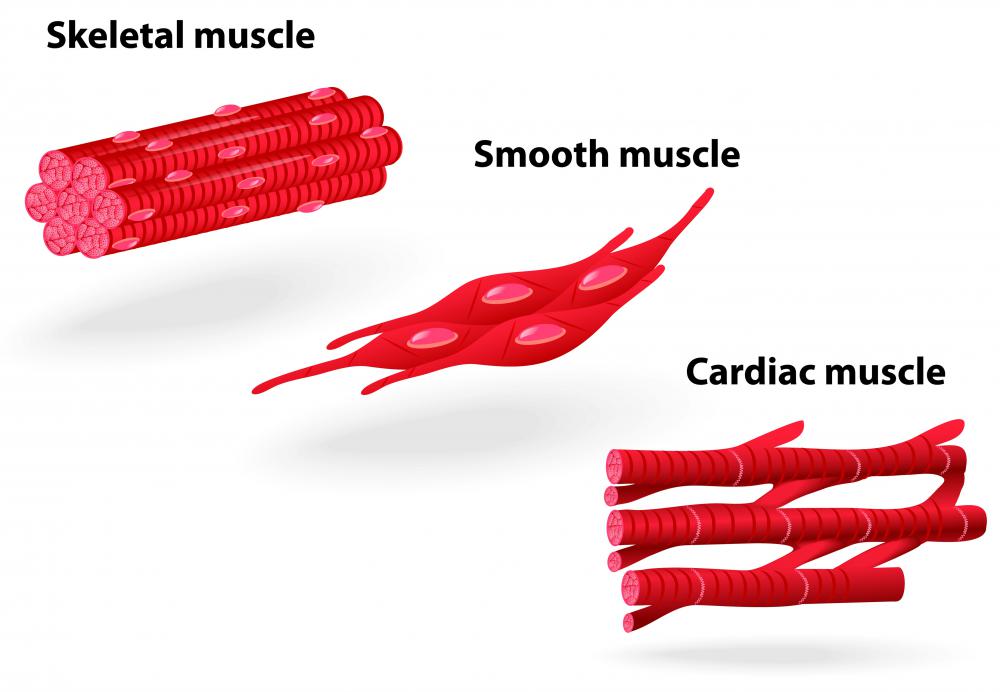At TheHealthBoard, we're committed to delivering accurate, trustworthy information. Our expert-authored content is rigorously fact-checked and sourced from credible authorities. Discover how we uphold the highest standards in providing you with reliable knowledge.
What Are the Functions of the Muscular System?
In humans, the muscles are one of the most abundant soft tissues, surpassed only by skin. There are three main types of muscle tissue: cardiac tissue, found in the heart; skeletal tissue, which allows for voluntary movement; and smooth muscle tissue, found mostly in the digestive tract. The functions of the muscular system are not always immediately obvious, and include voluntary and involuntary movement, visceral support, and thermogenesis or heat generation. The muscles require a high-protein diet to maintain their top form.
Cardiac muscle is located in the heart and undergoes regular, involuntary contractions, pumping blood through the circulatory system. Unlike the involuntary muscles of the heart, skeletal muscles produce voluntary movement. These muscles connect to bones via tendons, and their contraction causes the tendons to pull and move the attached bones. Smooth muscle, located primarily in the digestive tract, is under involuntary control and produces peristalsis, pushing food through the digestive tract.

Organ support is one of the most important functions of the muscular system. The muscles of the abdominal wall, such as the rectus abdominis, the transverse abdominals and the external/internal obliques, all hold abdominal organs such as stomach and intestines in place. If the abdominal muscles are ruptured, the small intestine can protrude; this is known as a hernia and can be life-threatening. Muscles and ligaments prevent internal organs from falling downward inside the body, and when these muscles fail to act against pressure from above, the organs can protrude from the rectum or genitalia.

Another of the functions of the muscular system is maintaing proper posture. Latissimus dorsi, the muscles attached to the shoulder blades, pull the shoulders back. Hip flexors keep the legs in proper position for a standing posture, and the muscles of the cervical spine hold up the head. A proper posture requires the spine to follow its natural curvature, with as little extra tension on muscles as possible.

Thermogenesis, or heat generation, is also one of the functions of the muscular system. Muscle produces the energy it needs to contract in a process known as glycolysis — the breakdown of glycogen. This is an exothermic chemical reaction, meaning that it produces more energy, but only a certain portion of energy reenters the muscle. The rest of the energy spreads throughout the body as heat; muscle contractions account for 85 percent of the heat necessary for homeostasis. When body temperature drops too low, the brain induces shivering to produce more heat.
AS FEATURED ON:
AS FEATURED ON:















Discuss this Article
Post your comments